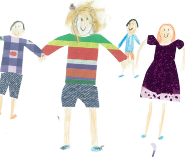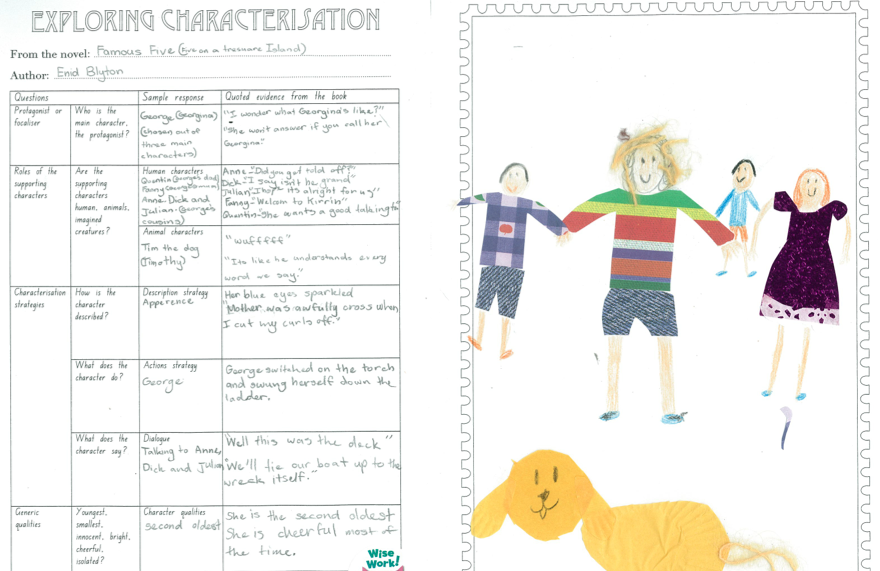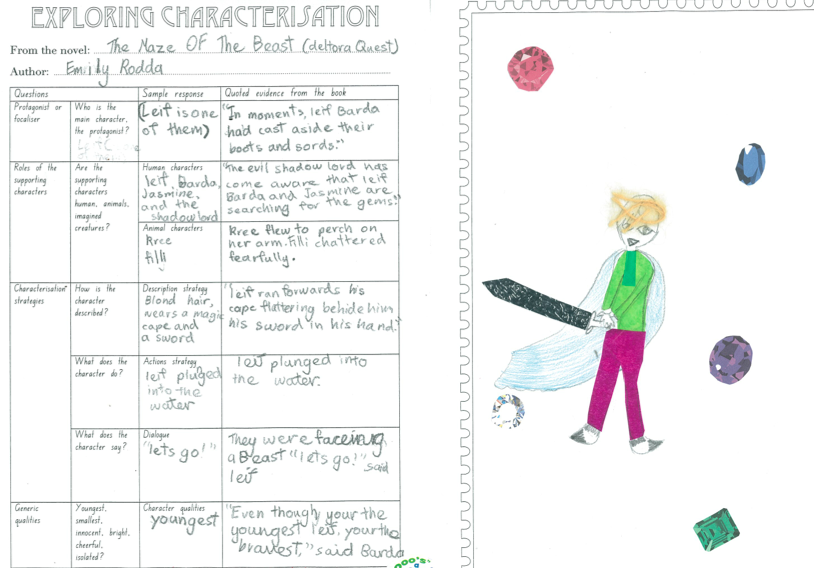At the end of 2013, Grade 3 students were introduced to strategies to help gain an understanding of ‘how authors  make stories exciting, how writing is moving and absorbing and holds a readers’ interest’ (ACELT1605). In order to do this in a series of 3 to 4 lessons the focus was on ‘close looking’ at techniques in character development in a sample piece of writing and then for students to explore these techniques from a book of their choice.
make stories exciting, how writing is moving and absorbing and holds a readers’ interest’ (ACELT1605). In order to do this in a series of 3 to 4 lessons the focus was on ‘close looking’ at techniques in character development in a sample piece of writing and then for students to explore these techniques from a book of their choice.
The introduction lesson included the following steps:
Demonstrate using The Wishbird by Gabrielle Wang. Scan a selected study page to allow students to view on the IWB, together read and decide as a class who appears to be the protagonist, the focalising character, and the supporting characters, include evidence from the novel. Findings / evidence recorded onto sample worksheet.
Students informed that they will need to bring a novel they have read to use in their own characterisation work for the following lessons.
Exploring Characterisation worksheet
Although the activity was a challenge for some students (at times it may have been the book they had selected had limitations) it was interesting to observe students taking note of specific techniques authors had employed. In Work Sample 1, the student clearly provides evidence from the novel of language the author has used to provide a description of the characters appearance ‘blue eyes sparkled…cut off my curls.’ Although a brief overview, the student has provided representation of the characters generic qualities ‘second oldest…cheerful most of the time.’
Sample 2 highly impressed me as this student worked independently and proved their understanding of the concepts we were covering in the lessons. The attention to detail in finding evidence to support the answers was superb, again although brief the student has found interesting use of language to detail how the character acted ‘Leif plunged into the water’ and we learn of generic qualities of Leif being the youngest and bravest.
 The idea for this activity is from A Literature Companion for Teachers by Lorraine McDonald. Chapter 5 ‘Examining Literature’ provides clear examples and loads of stimulation in examining setting, characterisation, plot structure, theme and symbol, style and evoking mood and vocabulary.
The idea for this activity is from A Literature Companion for Teachers by Lorraine McDonald. Chapter 5 ‘Examining Literature’ provides clear examples and loads of stimulation in examining setting, characterisation, plot structure, theme and symbol, style and evoking mood and vocabulary.
NSW Syllabus Outcomes for AC – English:
EN2-10C thinks imaginatively, creatively and interpretively about information, ideas and texts when responding to and composing texts
Develop and apply contextual knowledge: discuss how authors and illustrators make stories exciting, moving and absorbing and hold readers’ interest by using various techniques, for example character development and plot tension (ACELT1605)

